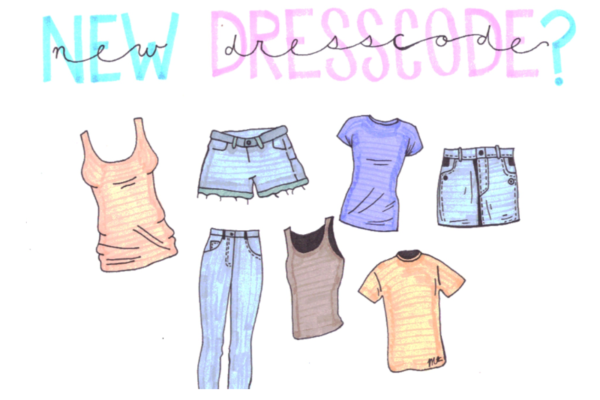He said, she said: sports pay gap still an issue
Over the past few years, women have made great strides in leveling the professional playing field, overcoming many obstacles, and breaking down barriers. However, women athletes are not paid the same as in men’s sports. So, the question still stands why does this gap still exist?

SENIOR ERIC MICHALS believes in his anti-pay gap argument. Stay tuned as Michals and Perez debate over more topics regarding ‘teen life’.
HE SAID:
Funding should be based off of the revenue generated.
Men’s sports consistently rakes in large amounts of money every year and one thing is for sure; it is one of the most predominant markets in the world. In 2017 year, Major League Men’s Soccer (MLS) brought in an estimated gross income of $644 million, according to World Sports Network. This comes as no shock considering the popularity of sport, but what about the women’s national soccer league? The National Women’s Soccer League (NWSL) has grown in popularity following several historic FIFA World Cup wins for the Women’s U.S. National Soccer Team, but they are still far behind their male counterparts.
There is a predominant pay gap when it comes to men’s and women’s sports and examples of it are everywhere; in every sport. This pay gap exists because women can’t bring in the amount of money the men can.
According to Soccer Stadium Digest, the NWSL’s team with the most ticket sales for their 2019 season, the Portland Thorns, averaged around 20,000 tickets per game. On the other hand, the MLS’s team with the best average attendance, Atlanta United, usually filled in around 52,000 seats per game. It is obvious that the men’s teams are more sought out and popular, even though they are playing the same sport. This allows for these teams to have a larger budget for both their program, as well as more money they can put towards creating a more memorable experience for their fans. These experiences are what draw in more money, so in order for women’s sports to reach the capacity of their male counterparts they have to create a better experience for their fans.
Organized sports such as the MLS, the National Football League (NFL), and the Women’s National Basketball Associations (WNBA) find a way to market highly athletic individuals for a profit. Athletes act as products that these organizations sell to the public, so the more attention a team gets the more money they earn. Therefore, funding for sports should be based off of revenue that is generated rather than everyone getting the same budget.

SENIOR ALEX PEREZ feels confident after finalizing her argument for the pay gap. Stay updated with the latest opinions regarding “teen life”.
SHE SAID:
Funding should be equal.
Female athletes are largely undervalued compared to their male counterparts, evident through the outrageous wage gap in all professional sports. This phenomenon can be most easily recognized in women’s soccer and basketball where women are constantly robbed of their hard work by not receiving adequate and equal compensation.
The U.S. Women’s Soccer team has taken the world by storm, ranked #1 in the world with four Olympic gold medals and three World Cup titles. The men’s team, however, has yet to compare to any of these accomplishments. Although the National Women’s Soccer League has increased the maximum salary per player to $50,000, according to Forbes’ calculations, So, how is it fair that women are paid just over one-third of what the men get when they significantly outshine the men in revenue, number of games played, and exceptional performances they put on every year?
The pay gap is even worse in women’s basketball, specifically the WNBA.
According to Forbes magazine, WNBA players make an average of $71,635 while the average National Basketball Association (NBA) player has a salary of $6.4 million.
Many may argue that the salaries of the players are based on the audience sizes and how much revenue is generated from each of their games. With this logic, NBA players would be paid more, however, the pay rates for the players are different. In this same review, while men receive 50% of the league revenue, WNBA players only get a measly 25 percent. Regardless of the amount of revenue that the respective leagues bring in, the average salaries should not have such a sizeable gap between them. With the amount of time and energy put into making basketball, or any sport for that matter, a profession, top talent in women’s sports should not be so underpaid that they are making slightly more than the average citizen while men receive an exorbitant and unnecessary amount of money.
Because professional sports are a business, it is understandable that if women’s sports generates less revenue, their players are paid less. However, efforts should be made to close the sizable gap between their respective salaries. While the viewership and money brought in is certainly a factor, these numbers do not excuse underpaying women by millions of dollars.








